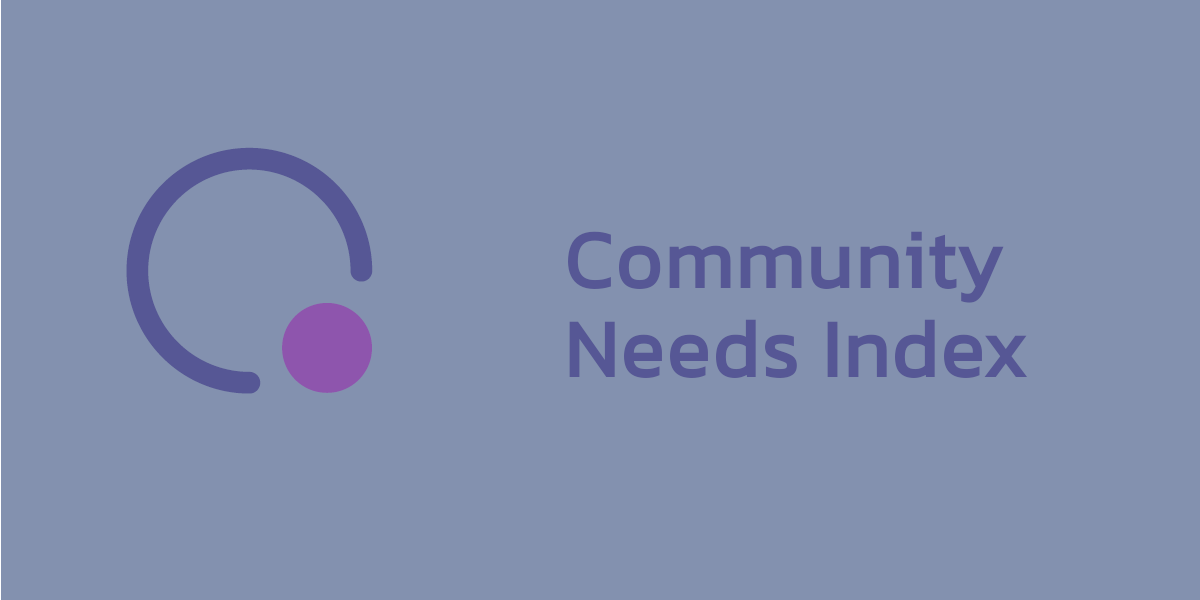
OCSI created the first version of the Community Needs Index in partnership with Local Trust as part of a wider project to develop a quantitative measure for ‘Left-behind neighbourhoods’.
Following that project, the British Red Cross asked us to create a Scotland-specific measure to support their COVID-19 Response Work (although it should be said the measures are not directly comparable – we go into more detail later in the blog if you want to understand the nitty-gritty of the methodology).
Similar to its English counterpart, the Scottish Community Needs Index (SCNI) is useful for gaining a unique perspective on community needs in Scotland, focusing on the social and cultural factors that can negatively impact life outcomes.
While traditional measures of deprivation (such as the Scottish Index of Multiple Deprivation) focus on the “presence of bad stuff” in a local area, the Community Needs Index instead looks at the “absence of good stuff” in a local area.
Both the English and Scottish Community Needs Index are exclusively available to explore within Local Insight.
The SCNI is made up of three individual domains, which are combined to give an overall community need score. The three domains are:
Civic assets: Presence and accessibility of community, civic, educational, and cultural facilities
Connectedness: Access to essential services, digital infrastructure, and local job opportunities.
Engaged communities: Level of civic participation, engagement with the third sector, and barriers to involvement.
The areas with a lower score (lower = greater need) on the Community Needs Index may lack the community infrastructure and resources needed to overcome existing challenges.
Each of the domains is given an equal weighting in the Scottish Community Needs Index.
The SCNI is built out of 29 underlying indicators from a range of sources including the Scottish Household Survey, 360Giving and the Consumer Data Research Centre. All indicators were carefully selected, taking into consideration the time point and granularity it was available for as well as the robustness of the data.
Examples include:
The Scottish Community Needs Index and English Community Needs Index (ECNI) are not directly comparable.
While the SCNI has been constructed using the same methodology and domain structure as the ECNI, there are substantial differences.
The ECNI now uses 2021 LSOAs as the underlying geography, after a consultation found it was preferred. The SCNI instead uses 2011 Intermediate Zone (IZ) level. While IZs are a different unit of geography to LSOAs, they offer the same benefits as LSOAs such as:
Where possible, we have used the same component indicators for the Scottish Community Needs Index, however there has been some necessary divergence due to data availability.
In addition, the English Community Needs Index and Scottish Community Needs Index cover different timepoints, adding further to the divergence between the two datasets.
The SCNI gives us a different perspective to more economically based measures of local need, and helps policy makers target investment in social infrastructure.
The ECNI is a key data source within Sport England’s Place Need Classification – created as part of their Place Partnerships work to support low income communities. The Place Need Classification was used to allocate £190m of funding, focused on the 80 – 100 places that have the greatest need
The ECNI was also used to allocate funding for the Know Your Neighbourhood (KYN) Fund – a package designed to widen participation in volunteering and tackle loneliness in 27 disadvantaged areas across England.
As mentioned, the data is exclusively available in our Local Insight platform so that you can explore the data for any area or community you care about, alongside more than 1000 other socio-economic indicators.
Book a demo and a free two week trial to discover the Scottish Community Needs Index for yourself.
We are proud to have contributed towards the Everybody needs good neighbourhoods…
More
The Community Life Survey (CLS) is an annual survey commissioned by the…
More
We are proud to be working with Wiltshire Community Foundation to provide…
More